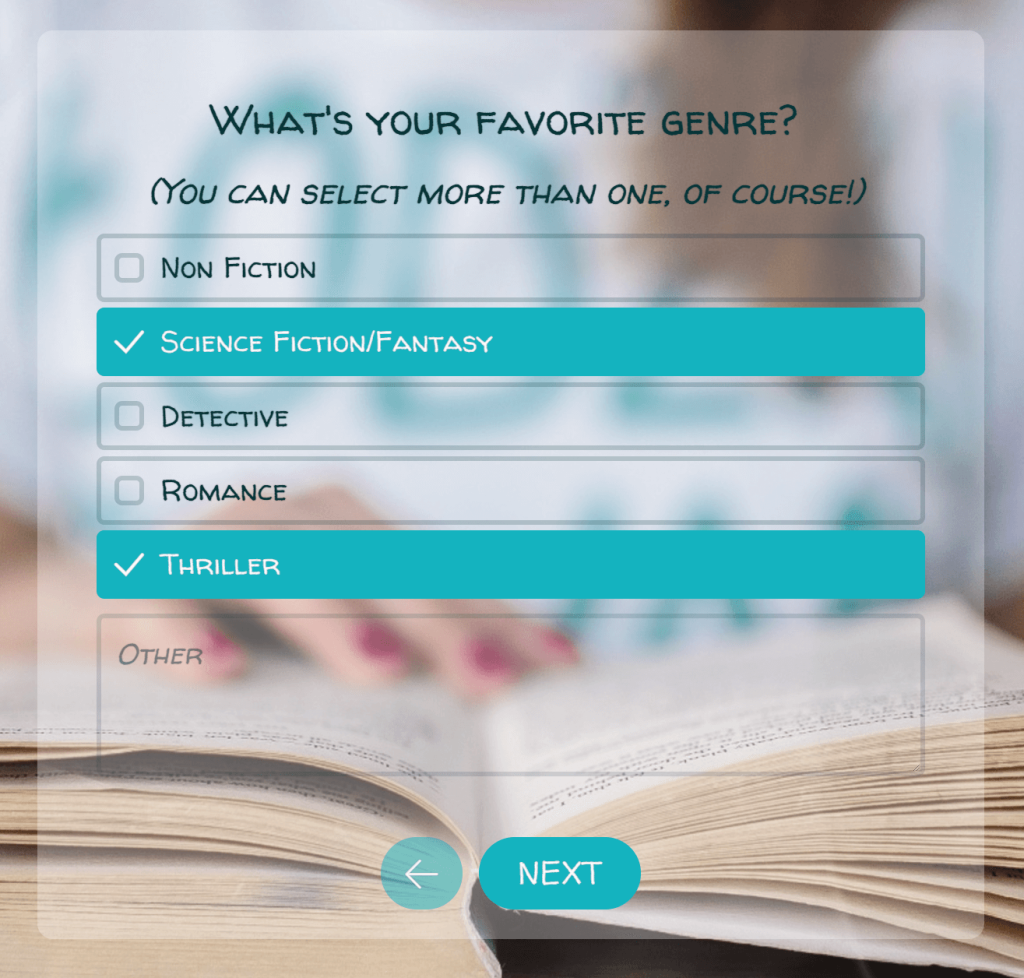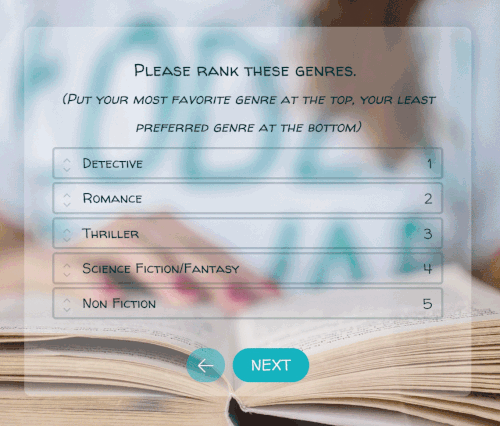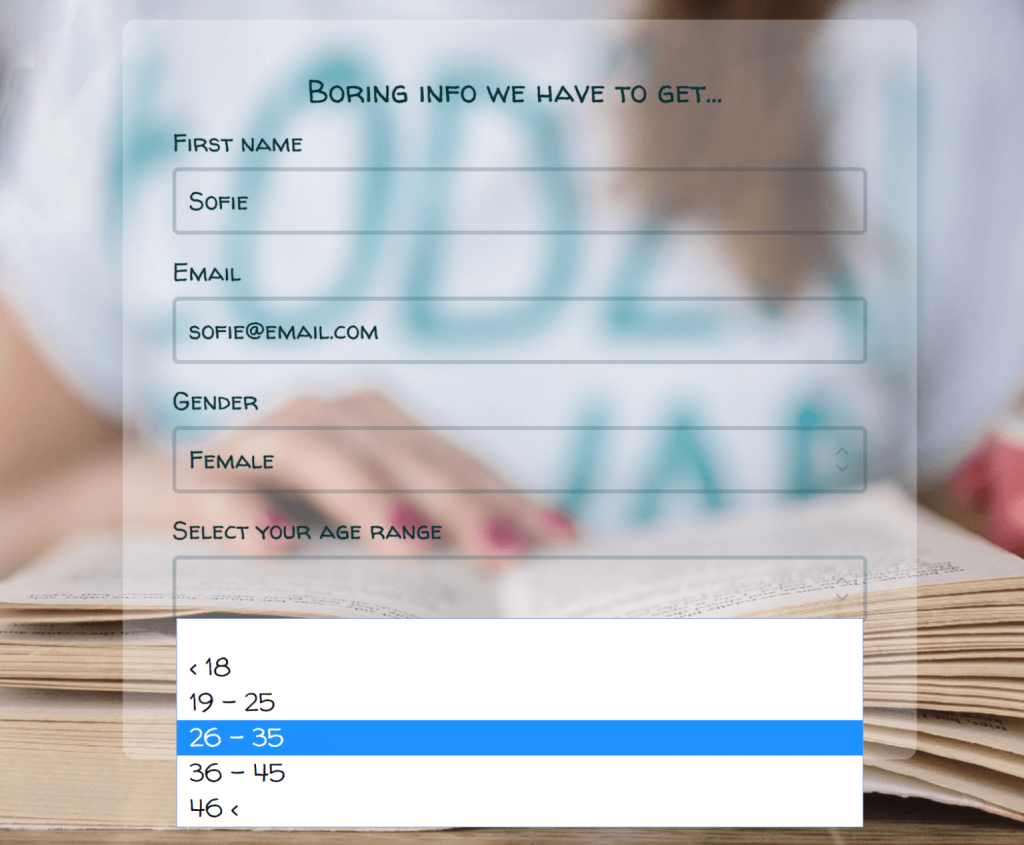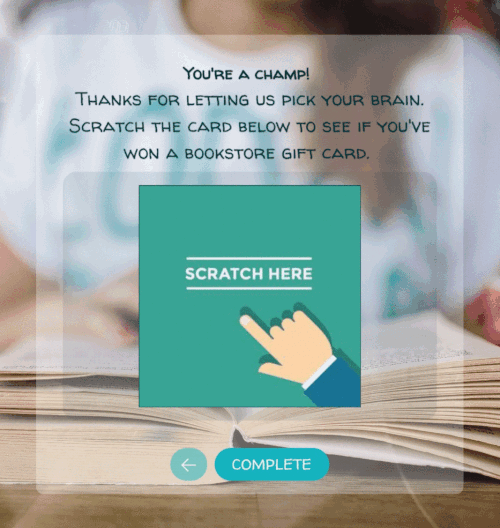How to choose the most effective survey question types
The success of a survey depends largely on asking the right questions to get the information you want.
In this post, we’ll guide you through choosing great survey questions that will engage your respondents.
Have you got a clear idea in mind of what you need to learn from your survey audience? Good. Roll up your sleeves, brace yourself…Let’s dive in!
3 Survey question formats
Did you know that, essentially, there are only three ways of asking a question? They form the base of all other question types and are the first decision you make when writing your survey.
1. Closed-ended questions
Closed-ended questions give the survey respondent a list of predefined answers to choose one or more items from. These questions don’t allow the respondent to explain their chosen answer.
Examples of closed-ended questions include simple yes/no questions, multiple-choice questions and rating questions.
Advantages of a closed-ended question:
- They are perfect when examining a set of very different qualities or variables.
- Questions like these will give you “clean data”, in the same structure for every respondent.
- In the case of a consultant-client relationship, they are perfect for developing a quantitative model to objectively evaluate a client’s maturity level.
- With the right assessment tool, it’s also super easy to score closed-ended answer options, based on your quantitative model (a small teaser in the Pointerpro help guide video below)

Disdvantages of a closed-ended question:
- Respondents can be frustrated when their desired answer is not listed
- They can suggest ideas that the respondent would not otherwise have (Beware of creating leading questions!)
Discover more reasons to choose (or avoid!) closed-ended survey questions here.
2. Open-ended questions
Open-ended questions allow respondents to give a personal explanation or point of view. It offers room for a respondent to give a very specific and detailed answer (if they choose to do so!).
You can usually recognize these questions because they tend to start with words such as “what”, “why”, “how” and “describe”.

Advantages of an open-ended question:
- They offer you detailed (and sometimes unexpected) qualitative insights
- Respondents are stimulated to voice their opinions and feelings, which add immense value to the answers
Disadvantages of an open-ended question:
- That collected data needs more (human) supervision for analysis.
- Respondents will provide you with more subjective answers. Is this the direction you’re thinking of going? Dig a little deeper into open-ended survey questions here.
A playful little extra: Nowadays, technology offers fun twists on this question type, like the selfie-upload example below!
3. Semi closed-ended question
Qualitative input, quantitative input, or both? Let’s compromise! Perfect for when you need to gather both very specific answers and context.
Semi Closed-Ended questions give you uniform data, explained with a few personal insights where they truly matter. This is your spot to find truly engaged respondents. Use their enthusiasm to turn them in potential ambassadors for your brand.

Now we’ve covered the very basics! If you want to dive a little deeper, take a look at this great guide by Zapier: A simple guide to asking effective questions
5 Popular survey question types
When you start building your survey, practice the questions you’re using on some of your coworkers or someone close to you. Are they answering it the way you would expect? Is it getting you the info you need?
This is a reliable way to judge the difference between good survey questions and great survey questions.
1. Dichotomous questions
This is our first example of a closed-ended question. Dichotomous questions are also known as Yes/No questions. When forming a Yes/No question, keep the following verbs in mind: BE, DO, HAVE or a modal verb.
Without one of these, it’s impossible to answer your question with a simple “yes” or “no”.
This type of survey question is perfect for a respondent to answer quickly and without having to put too much thought and effort into it.
But make sure you mix it up with some other question types to avoid careless skipping through questions.
2. Ratings/scale questions
Another closed-ended question is a rating scale, where you can uncover a certain degree of opinion.
So many options here!
First, you’ll need to make a choice between a bipolar construct and a unipolar construct.
Bipolar is used when you have a construct that ranges from negative to positive. Always remember to put a “neutral” in the middle of such a scale.

If you’re asking a survey question that ranges from zero to positive, we talk about unipolar constructs.

And then as a second step, you’ll have your visualization.
You can choose between question types such as a numeric rating scale, a graphic rating scale or a descriptive rating scale.

The Likert-type scale is the most well-known numeric rating scale.
A good rating scale should be easy to interpret, especially the meaning of each scale point should be clear.
It should include enough points to differentiate respondents from one another as possible.
Do you think you’ll be measuring your responses through ratings? Take a closer look at the rating scale and all its variants here.
3. List of items/ multiple-choice questions
The one we hated when taking tests!
Because they made things so confusing …
But it’s also the one that scored you points if you had a knack for guessing.
Try to avoid that with your own respondents by giving them smart options!
This closed-ended question offers your respondents a certain number of answers. It’s up to you if you’ll allow them to answer with one or more possible options.

Read up more tips and discover an extensive guide on multiple-choice questions here.
4. Ordinal questions
The one where respondents can rearrange the answers any way they like!
The basic principle of this question type is to sort the answers in order of importance, according to the respondent. The old-fashioned way (assigning numbers) can now be replaced by a more interactive drag and drop variant.

Don’t forget to define in your question what the order of the ranking is. Should the most positive or negative be on top, for example? Avoid respondents misinterpreting your ranking question and providing you with faulty data.
Learn everything you need to know on ranking questions here.
5. Demographic questions
Time to get a little personal 😉
These questions are used to form an image of the respondent taking the questionnaire. They gather info on characteristics such as gender, age, place, income, …
These data will help you define a clear picture or context of the audience you’re surveying and, ultimately, will help you to better understand their choices.
Not only are these helpful survey questions to ask, but it’s an easy way to discover how you can reach them with upcoming communication or campaigns you have planned as well.

Pay attention to the information you ask and need. If you send out an email with your questionnaire, it would be strange to ask for the respondent’s email address again in the demographic question.
Find some great examples and learn how to use demographic questions here.
Why skip logic and contingency questions are effective
I get it.
This title might need a bit more explanation!
When you’re creating a survey, it’s useful to apply Skip Logic.
It means that you guide the respondent through the survey, using only questions that are relevant to that respondent, based on their previous answers.
In a nutshell, here’s how it works:

For example, when a respondent answered they don’t enjoy reading thrillers, it’s no use asking them what their favorite thriller is afterward.
Using Skip Logic will make your respondents fly through your amazing survey, not losing any time on questions that aren’t relevant.
- It will make them feel more valued, to have a questionnaire that feels like it was made just for them.
- It gives you the opportunity to have more of a life-like conversation with your respondent.
- You as a researcher get nothing but the right data and more qualitative data in return.
Go here if you want to learn more about using Conditional Branching (skip logic). Want to get started, play around in a trial version of our online survey software.
Survey question-wording: It’s a big deal
These pointers are great to keep in mind when formulating questions.
While you’re coming up with survey ideas, it’s easy to lose yourself in thinking of what you hope to learn instead of what you need to learn. This is translated into the way you ask your questions.
By forcing yourself to take a step back ever so often, you’ll keep the greater goal of your research in mind.
Focus: Ask for only one thing per survey question
How many books have you read this past month?
Instead of
Do you read less because you have too much work?
This last question isn’t great (at all!) for a number of reasons:
- ‘Because’ indicates you’re assuming something for the respondent.
- How much is too much?
- What if there’s another reason, why I read less? I’ll just answer ‘No’ and you’ll still have no idea.
Be precise: Don’t ask ‘leading questions
Do you enjoy reading detective novels?
Instead of
Detective novels are extremely popular, do you enjoy reading them?
Phrasings can be interpreted in many ways: a specific problem is asking ‘leading questions’ where you add too much of an opinion into your question.
Reduce the chance of misinterpretation by clearly defining the terms used in the question and answer format and even by giving some extra context if necessary. Avoid using words that are loaded or emotional.
Let your respondent decide if Detective novels are exciting! 😉
Entertain!
If you’re setting up your survey in such a way that it allows you to “interact” with your respondents: Great work!
Another thing that might help is adding a bit of fun or entertainment. It doesn’t mean you shouldn’t focus on getting serious results out of it, it does mean that you can get more results by making sure the respondent feels good about taking the survey.

Incentivizing with a playful widget like a digital scratch card, for example. Or providing some valuable personalized information at the end of the survey, can already increase the positive feeling towards your brand.
Take a minute to discover more about the benefits and ways to unbore the common survey.
Keep your survey short and simple
Be brief.
The longer the question, the higher the risk your respondent will misinterpret or will stop reading halfway.
I am not saying that you should leave out necessary info or an explanation if it’s needed. But a pro tip here is to separate the explanation from the actual question, to make the info more digestible.
Additionally, keep an eye on timing.
Test how long it takes for a respondent to finish these questions, compared to how much time the respondent actually has.
Interact
To capture the respondents’ attention and give them the opportunity to connect to your brand, the use of “human language” is important.
Try to formulate your questions in an easy and relatable way, avoid unnecessary jargon.
There are some very easy, quick ways to lift your survey to a higher level, take a look at these 6 ways to make your survey more conversational.
With these tips, you’re all set to build a successful questionnaire. ?
Ready for the next step?




2 Responses
Nice..thanks a lot
This is fantastic information, exactly what I needed. Thank you!